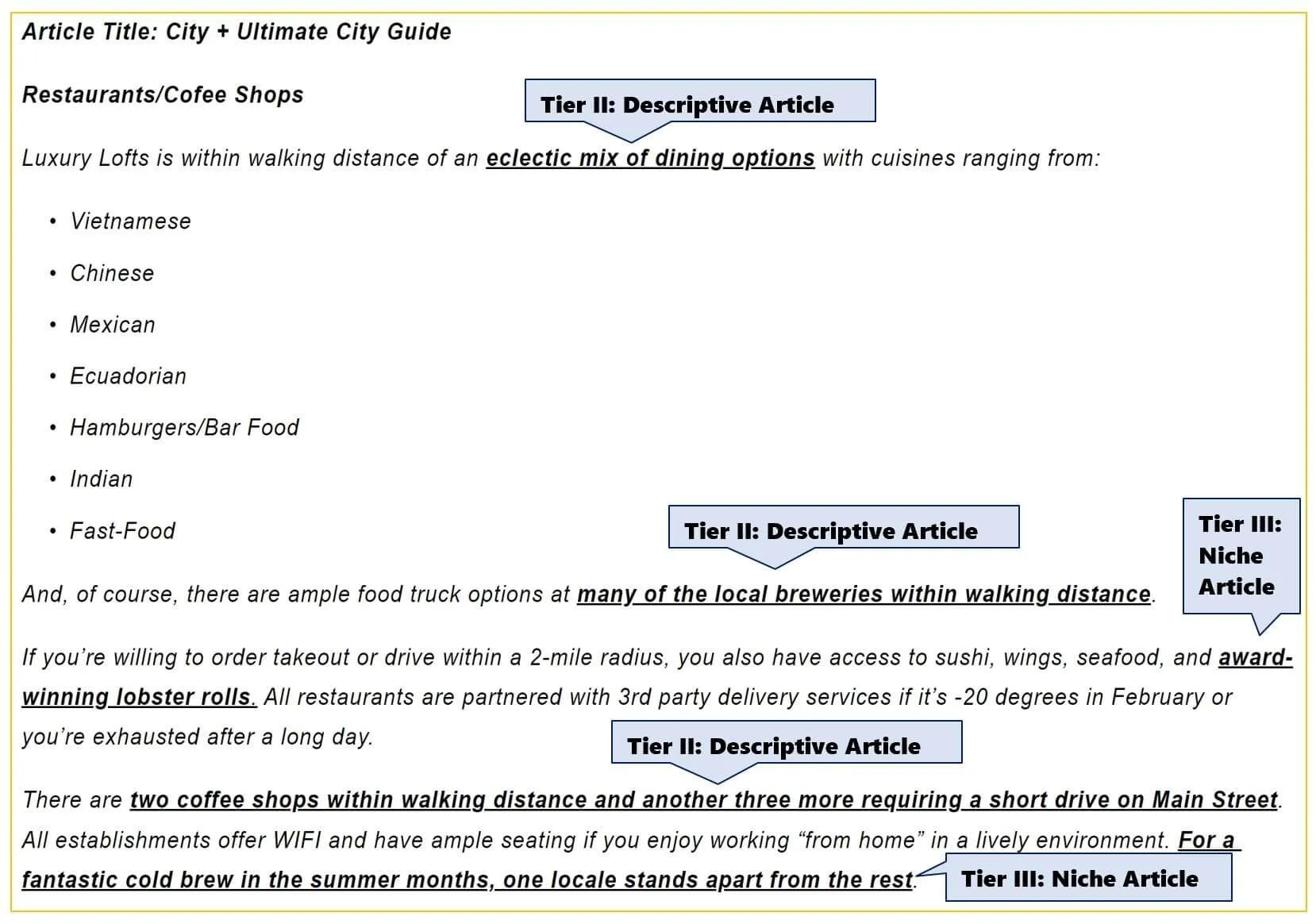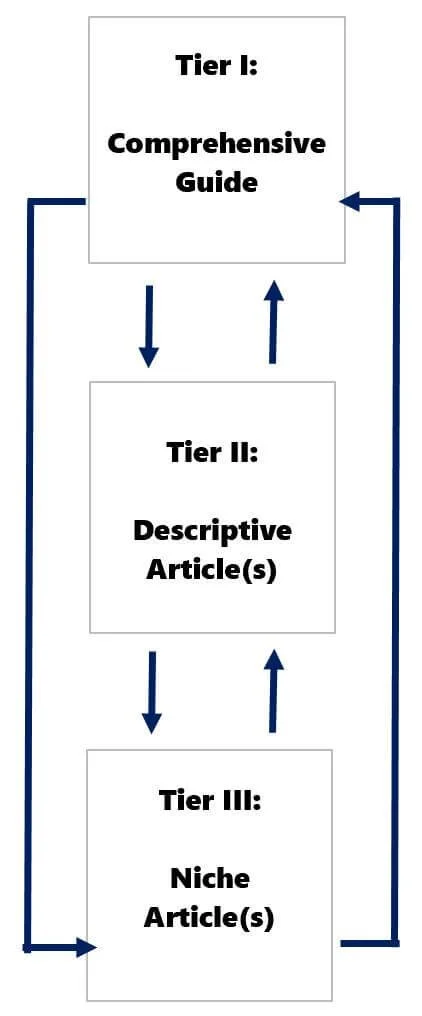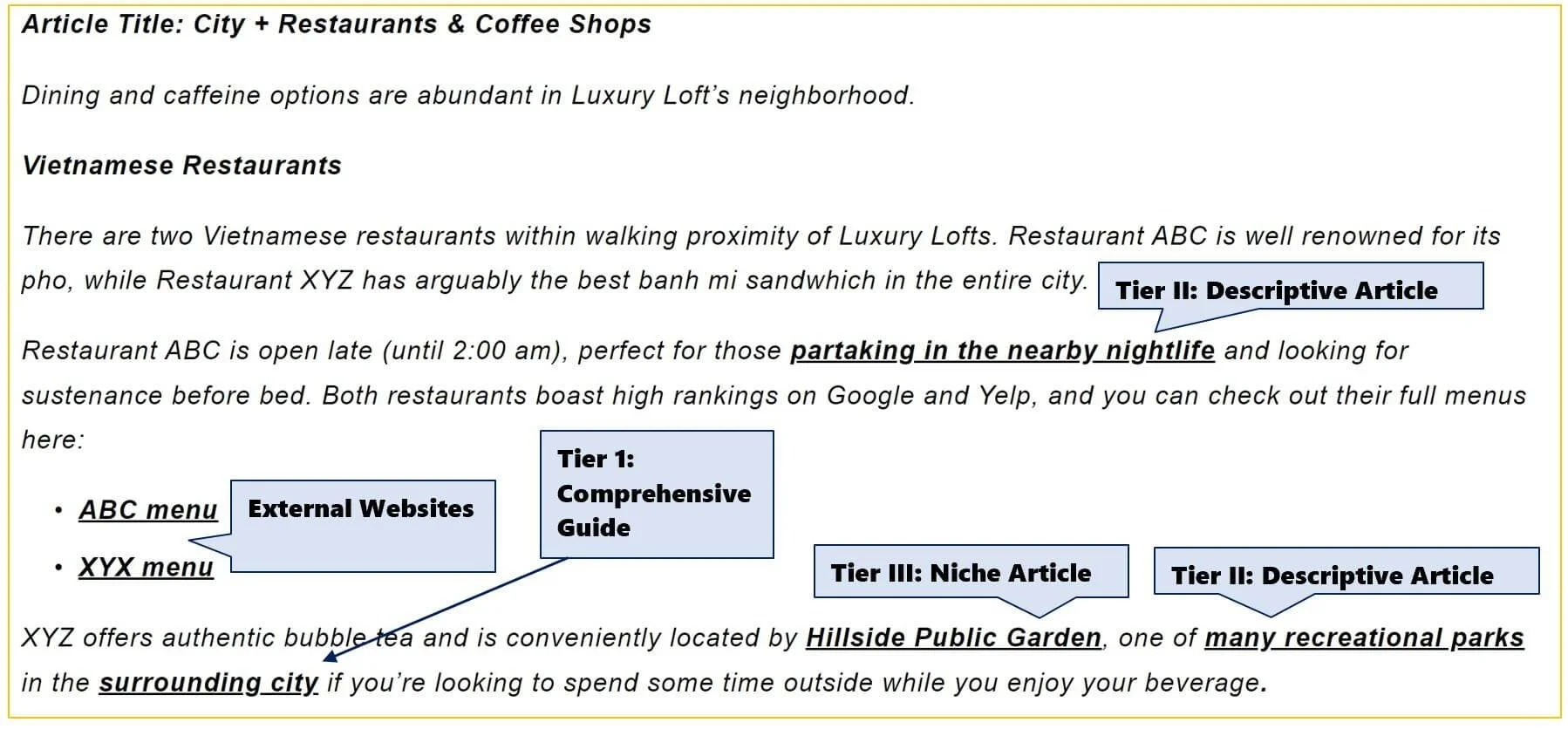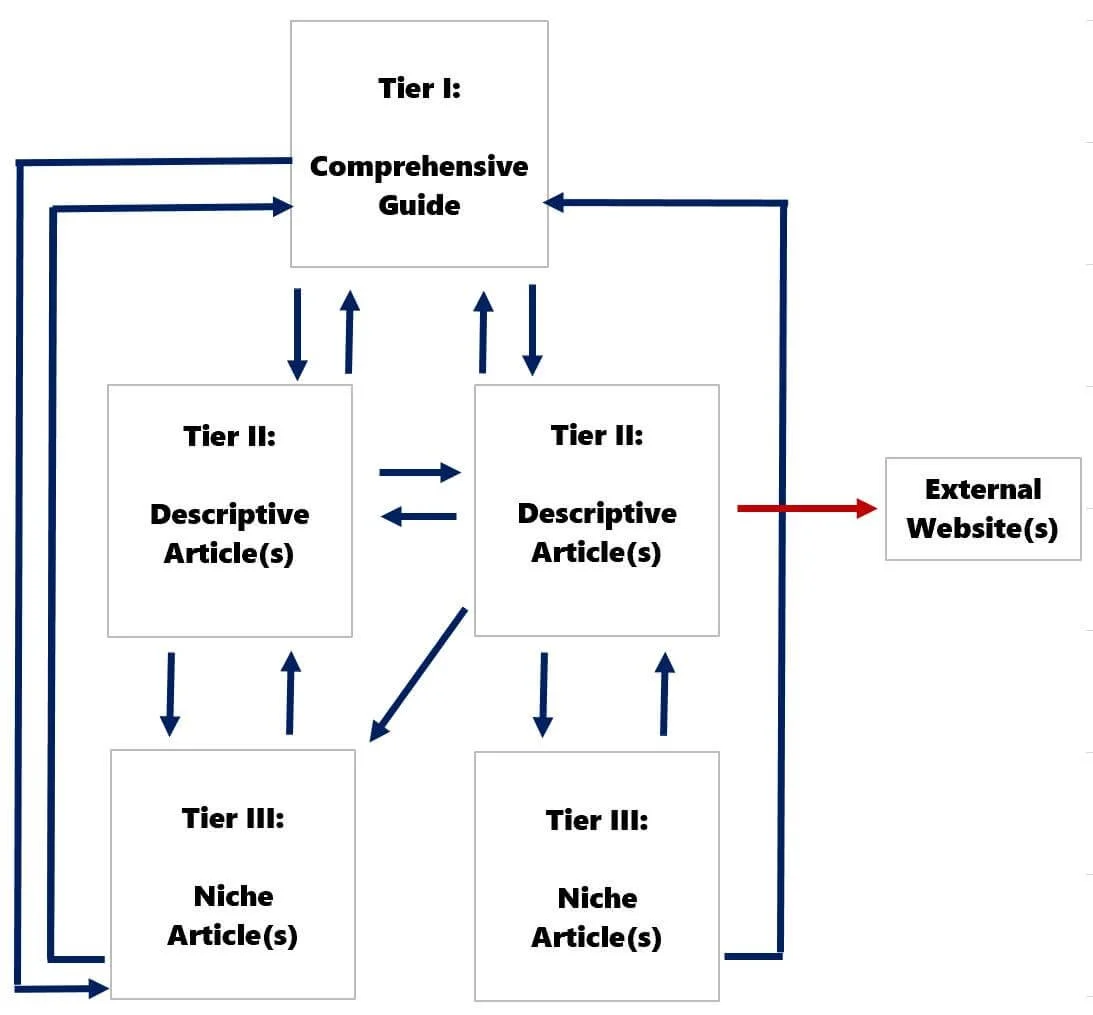Optimizing Apartment SEO on your Multifamily Website
I came across an article published by Multi-Housing News that talks about adding a City Guide to your property's website and details some of the benefits that could go with it, including SEO.
This idea epitomizes the low-hanging fruit that could reap massive benefits for apartment owners looking to impress prospects and bolster free tenant lead generation. While the article linked above stays relatively high-level, I plan to detail how I would build out this guide.
With a bit of sweat equity, your site could be a tremendous resource for local renters and set your business apart in the ultra-competitive local multifamily industry.
Note: Most multifamily website design templates allow site owners to blog. This feature is paramount.
Search Engine Optimization (SEO)
Digital marketing is fraught with confusing jargon and faux expertise. It feels like the only way to achieve a solid SEO strategy is to pay SEO services companies thousands of dollars to implement specialized expertise.
This notion couldn’t be further from the truth. I believe maximizing web presence for typical apartment owners comes down to two things:
Quality
Consistency
This means:
Structuring your content (blog posts) to add value to your website visitors
Regularly creating new posts
Refreshing existing content
You’ll likely experience engaged visitors who check back more frequently and potentially sign a rental lease.
SEO Definition
SEO means “search engine optimization.” A watered-down definition of SEO is how the search algorithms (Google, Bing, or DuckDuckGo) view your site in terms of caliber, credibility, and relevance.
The more you engage website visitors over a long-term time horizon, the more trust you’ll earn with the search engines that should rank your content higher than your competitors on various search terms you exhibit expertise.
For a practical city guide, you want to show your city/neighborhood knowledge and how your apartment community weaves into the city's fabric of entertainment, recreation, transport, job opportunities, etc.
SEO Importance
Getting people to land on your webpage via SEO is a massive benefit because you don’t need to pay for this traffic. So many businesses pour enormous amounts of budget into paid advertising, such as Google Ads or social media ads for their apartment marketing. Taking the time and writing a thorough city guide could set you up for free leads for years.
Note: I argue this is a more crucial strategy for short-term rentals in tourist towns. Imagine not being dependent on Airbnb or VRBO, who are taking a cut from each booking. Finding organic leads could boost margins drastically.
SEO Timeline
SEO is a long-term game. I don’t expect noticeable results for at least six months after publishing an article. Thankfully, you’re a multifamily real estate investor, and delayed gratification should not be a foreign concept. Remember, consistency is your biggest ally in improving SEO; even then, there are no guarantees of imminent website traffic.
SEO Perks
Once the search engine results trickle in, you can consider those site visitors as potential tenants. They are coming to your site for free. You are giving them a great first impression, providing vital information about the city, and showing your expertise as a knowledgeable landlord in tune with the local landscape.
Imagine a college graduate looking to relocate to Southern California and searching for “Things to do in Long Beach.” They land on an article of yours talking about the local museums and how far away each museum is from your rental property. More information about your rental units and rates is conveniently only a few clicks away!
Or maybe an empty nester is selling their suburban home and looking to live in the urban core. They no longer want to depend on their car, so they search for “Public transportation options in Portland, Oregon.”
They land on your blog article talking about the various bus routes, pick-up times, and how two different bus stops are at the front door of the apartment building. There’s a good chance you’ll get an inquiry about your units.
Think of your blog posts as the initial sales funnel, turning a cold lead into a warm one for the property management team.
City Guide Structure
I would structure your city guide into the following three tiers:
Tier I: Comprehensive Guide
Tier II: Descriptive Articles
Tier III: Niche Articles (optional)
Comprehensive Guide (Tier-I)
The comprehensive city guide is a high-level article that touches on the various facets of the city that would appeal to residents. There will only be one complete guide. Think of these facets as broad categories like:
Restaurants/Coffee Shops
Breweries/Distilleries
Bars/Nightlife
Parks/Trails
Public Transportation
Major Employment Centers
Kids’ Activities
Schools/Education
You should include a table of contents at the beginning of the blog post with anchor links so people can skip to the part(s) of the article that interests them. For example, a young professional may be more interested in restaurants, bars, and public transport, while a young family seeks information on schools, parks, and activities for kids.
Here’s an example of the table of contents and how the anchor links function from another Tactica blog post as a reference.
Think of this article as a navigational tool instead of an educational one. This page is your home base where a website visitor can quickly visit various areas of interest. The tier II and tier III articles will robustly describe the bullets above.
The comprehensive guide will focus more on the proximity of these amenities to the apartment complex without much detail. It’s wide-ranging but lacks precise detail on purpose. Each bullet above would read similarly to the example below for Restaurants/Coffee Shops:
Article Title: City + Ultimate City Guide
Restaurants/Cofee Shops
Luxury Lofts is within walking distance of an eclectic mix of dining options with cuisines ranging from:
Vietnamese
Chinese
Mexican
Ecuadorian
Hamburgers/Bar Food
Indian
Fast-Food
And, of course, there are ample food truck options at many local breweries within walking distance.
If you’re willing to order takeout or drive within a 2-mile radius, you can also access sushi, wings, seafood, and award-winning lobster rolls. All restaurants are partnered with 3rd party delivery services if it’s -20 degrees in February or you’re exhausted after a long day.
There are two coffee shops within walking distance and another three more requiring a short drive on Main Street. All establishments offer WIFI and have ample seating if you enjoy working “from home” in a lively environment. One locale stands apart from the rest for a fantastic cold brew in the summer months.
Did you notice the bold, underlined snippets? Those potential links will branch into descriptive and other niche articles with much more information. See below:
See how I kept it very high-level on this first page of the guide? The idea is for the visitor to view other content that is more detailed and eventually return to the comprehensive guide and explore different categories.
The flow between the various articles is described below:
Descriptive Articles (Tier-II)
It’s essential to remember when you write your descriptive articles to allow readers an opportunity to jump back to the comprehensive guide (tier I) or other descriptive (tier II) or niche articles (tier III). You want your reader to browse multiple articles and for that process to be seamless.
Our comprehensive guide mentioned an “eclectic mix of dining options” linked to a descriptive article that discusses the options in greater detail, their proximity to the apartment complex, and other helpful information. I’m using the same format from the comprehensive guide but getting much more granular with each dining option/cuisine.
Article Title: City + Restaurants & Coffee Shops
Dining and caffeine options are abundant in the Luxury Loft neighborhood.
Vietnamese Restaurants
There are two Vietnamese restaurants within walking proximity of Luxury Lofts. Restaurant ABC is renowned for its pho, while Restaurant XYZ has arguably the best banh mi sandwich in the city.
Restaurant ABC is open late (until 2:00 am), perfect for those partaking in the nearby nightlife and looking for sustenance before bed. Both restaurants boast high rankings on Google and Yelp, and you can check out their full menus here:
ABC menu
XYX menu
XYZ offers authentic bubble tea and is conveniently located by Hillside Public Garden, one of many recreational parks in the surrounding city if you want to spend some time outside while enjoying your beverage.
I would continue writing about all the prevalent restaurant genres and their uniqueness, following a similar pattern to the sample snippet.
I have links to other descriptive and niche articles and the comprehensive guide. I even link to the restaurants’ websites for the visitors inclined to call their phone numbers and order.
Note: If I were linking to sites outside the apartment website, I’d make sure the link opens as a “new window” so the visitor can easily continue their engagement with my site once they finish reviewing the external website(s). You can see how this looks in the first paragraph of this blog post.
Niche Articles (Tier-III)
The last hierarchy of articles is “niche.” These articles are helpful for thoroughly reviewing particular establishments, locations, or activities. This type of post could be a personal review with pictures, pricing, pros and cons, and “insider” tips for restaurant patrons.
A specific park could include information on the amenities (such as jogging trails or basketball courts), busiest hours, safety tips, and playground specs (for the kiddos).
Like other articles in the hierarchy, you should always link to other niche articles, descriptive articles, and the comprehensive guide. Linking to other official city resources is also wise and helps portray credibility.
The diagram above shows how various articles within your guide could link. There's no hard rule on how these posts across the city guide hierarchy should connect. You can probably envision how robust your city guide resource will look once you have a comprehensive guide, descriptive articles, and niche articles describing all prevalent bullets:
Restaurants/Coffee Shops
Breweries/Distilleries
Bars/Nightlife
Parks/Trails
Public Transportation
Major Employment Centers
Kids’ Activities
Schools/Education
Organization Rule of Thumb
If there's a good reason to link two articles (like in the example text above where a restaurant borders a park), then it makes sense that the park FAQ and restaurant summary article potentially link up. Don't worry about linking if there is no connection between article topics. For example, there is no need to link an elementary school review and a descriptive post describing nighttime entertainment options.
When figuring out how to connect content throughout your guide, think about the reader and their experience. Ideally, you are trying to improve their viewing experience by connecting dots for them. Set up the navigation so the site visitor can intuitively read through your guide seamlessly and get back to the comprehensive guide with relative ease.
Updating Articles
To maximize local SEO, you need to be updating these articles. Remember, old establishments are closing and being replaced by new ones. Hours of operations are changing, the pandemic policy is fluid, and major employers are coming and going.
A healthy city is in constant flux. If you’re fortunate to receive Google search traffic, you must ensure your content is reasonably accurate. You don’t need to update daily or even monthly, but minimally, I would spend a few hours each quarter reviewing your blog posts for accuracy.
Another perk of maintaining timely, relevant posts is that other prominent local websites may link to your posts as a viable resource for their website viewers. This action will build more credibility with the search engines (a phenomenon generally called organic “link building”) and lead to more website traffic.
Summary
The paragraphs above detail a marketing campaign focused on SEO. This SEO campaign may surprise some, but it isn’t technical or complicated. It revolves around writing educational blog posts about what your city offers potential apartment renters living at your property.
You can continually add or delete blog posts as the city changes and update content. Over the long term, this strategy will showcase your community knowledge and accentuate how your apartment complex weaves into the city's fabric of entertainment, recreation, transport, job opportunities, and much more.
The more people that land on your site, the more opportunities to unearth potential future residents at no cost. It’s a win-win for everybody.












